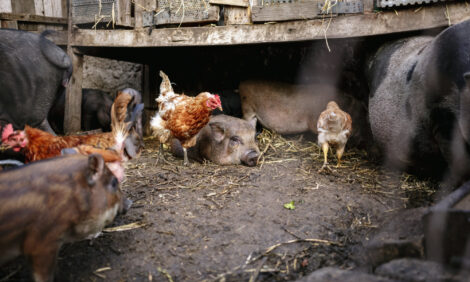



US animal producers require veterinary prescription to access antibiotics
The rule comes into effect on June 11, 2023Antibiotics are used widely to fight bacterial infections in humans and animals. However, if the bacteria develop a resistance to that antibiotic, the drug becomes less effective in fighting the infections. For this reason, over the counter (OTC) antibiotics will only be available to producers from a veterinarian or with a prescription from a veterinarian.
To ensure continued effective use in humans and animals the US Food and Drug Administration Center for Veterinary Medicine has developed a 5-year Veterinary Stewardship Plan designed to slow the emergence of antimicrobial resistance that can arise from the misuse of antibiotics in animals while ensuring safe and effective use of medically important antibiotics in animals and humans, according to a news release from Michigan State University.
Many antibiotics are medically important to both human and animal health. The intent of this legislation is to ensure that these drugs are used under veterinary supervision, reducing the chance for development of antimicrobial resistance to these drugs in both humans and animals.
In 2017, FDA placed in-feed and water-soluble medications use under veterinarian supervision through Veterinary Feed Directive. The next steps in this transition will move OTC products to veterinary oversight. As of June 11, 2023, all medically important antibiotics in dosage forms such as injectable, intramammary and boluses, approved for use in animals — both food-producing and companion — will no longer be available over the counter.
The drugs will also display the following statement on the label: "Caution: Federal law restricts this drug to use by or on the order of a licensed veterinarian”. Products sold OTC, are typically sold at farm stores, feed stores and by on-line suppliers.
To obtain these drugs, producers will need a valid veterinarian-client-patient relationship (VCPR) with a licensed veterinarian. According to the Michigan Department of Agriculture and Rural Development (MDARD) a VCPR is considered valid if all of the following apply:
- A veterinarian has assumed the responsibility for making medical judgments regarding the health of (an) animal(s) and the need for medical treatment, and the client (the owner of the animal or animals or other caretaker) has agreed to follow the instructions of the veterinarian
- There is sufficient knowledge of the animal(s) by the veterinarian to initiate at least a general or preliminary diagnosis of the medical condition of the animal(s)
- The practicing veterinarian is readily available for follow-up in case of adverse reactions or failure of the regimen of therapy. Such a relationship can exist only when the veterinarian has recently seen and is personally acquainted with the keeping and care of the animal(s) by virtue of examination of the animal(s), and/or by medically appropriate and timely visits to the premises where the animal(s) are kept."
The VCPR does not mean that producers must purchase the drugs from their veterinarian, but it does mean that the distribution of antibiotics will require a prescription from the veterinarian with whom they have a valid VCPR to purchase the drugs.
Antibiotics can be important to livestock producers for maintaining the health of their animals. It is important that produces are aware of the new requirements to a) establish a VCPR in advance for their herd and b) to continue to use antibiotics, when needed, to maintain animal health.
Michigan State University Extension recommends that small ruminant producers who don’t already have a good relationship with a trusted veterinarian start seeking one out and establish that relationship now, before an emergency occurs or they need access to drugs that are no longer available over the counter. This will help the veterinarian become acquainted with your individual management practices and the potential needs of your farm. MDARD recommends to veterinarians that they visit a farm once at least every 12 months.



